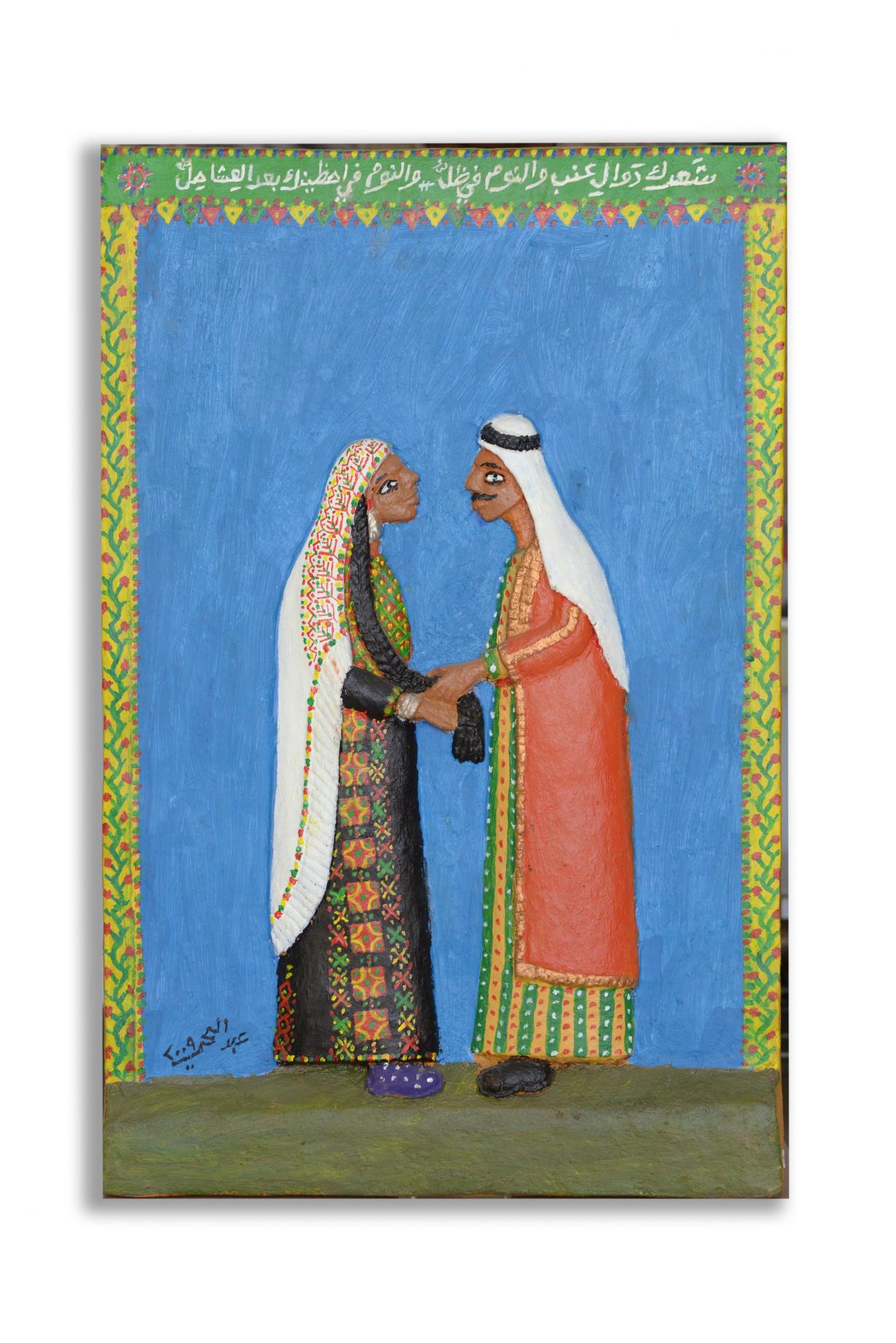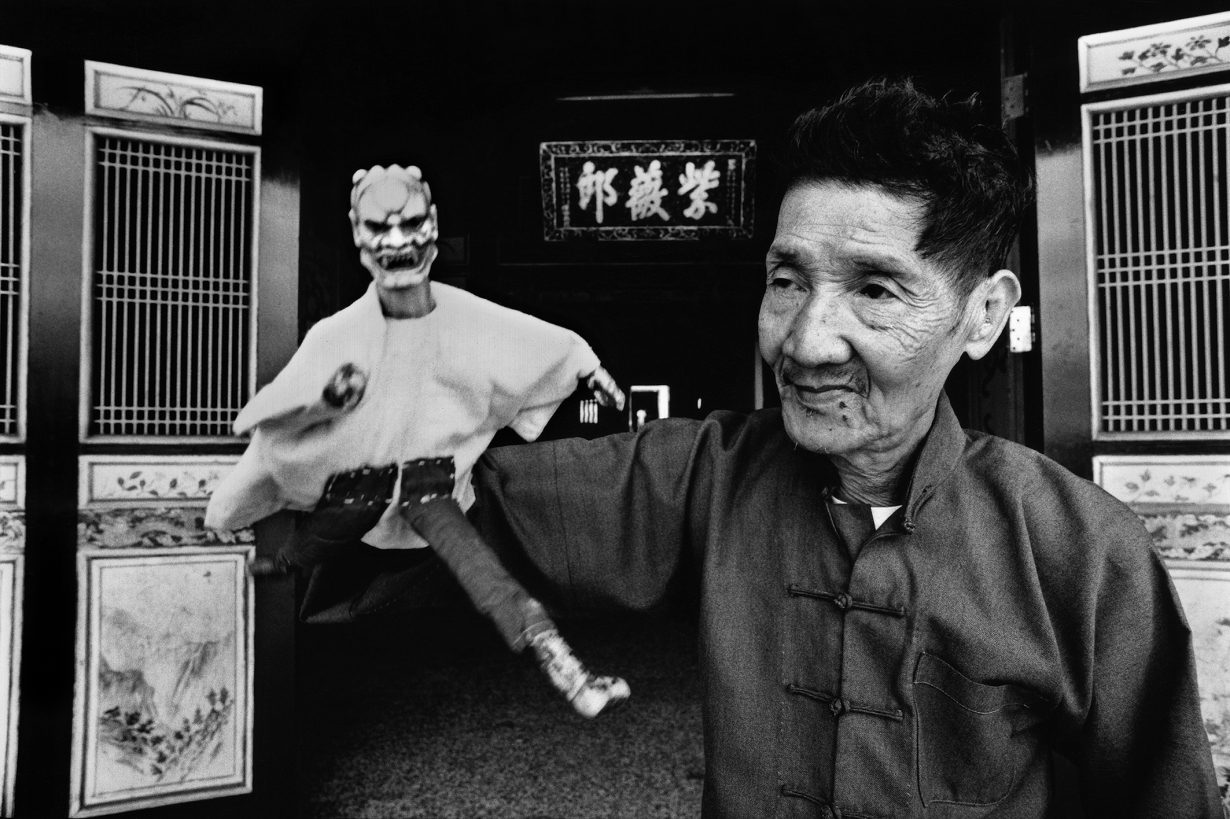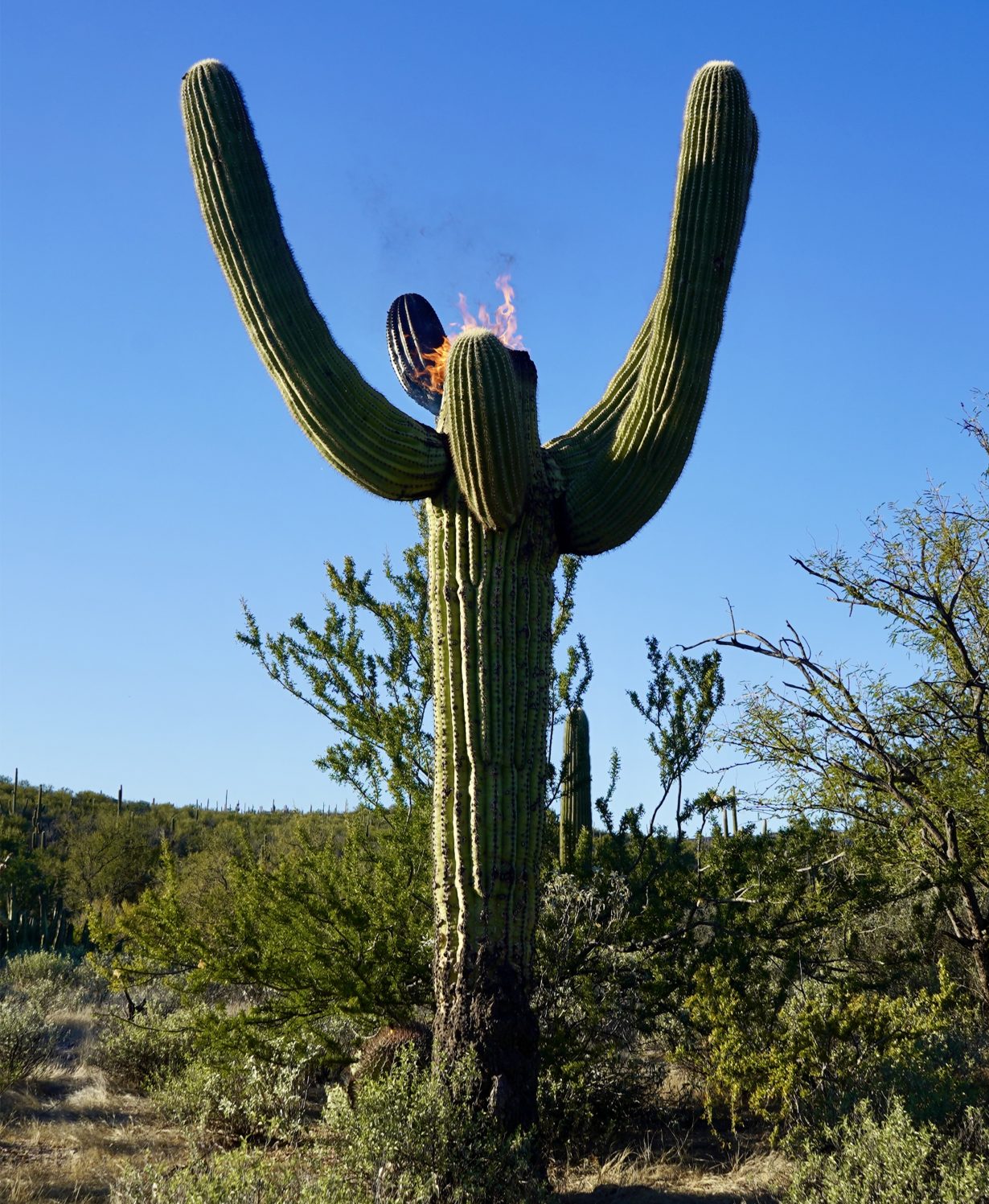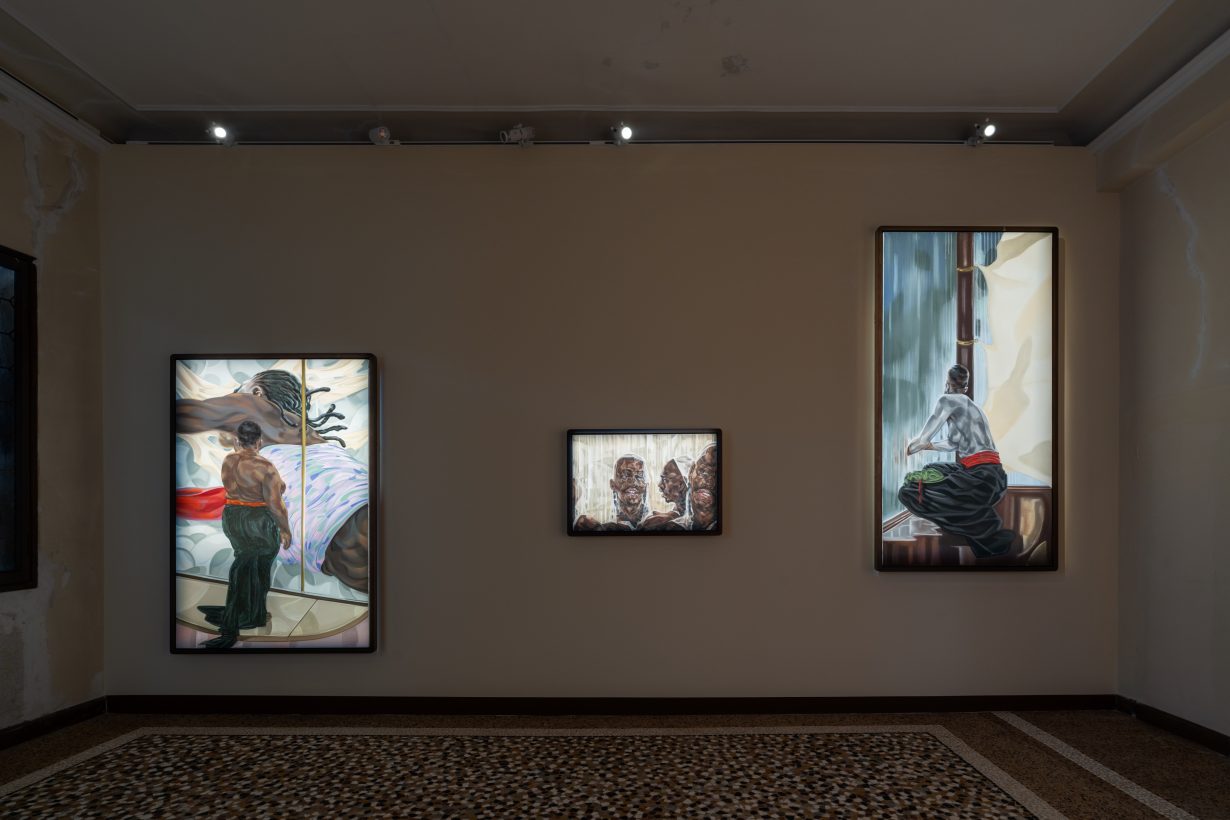Our editors on the exhibitions they’re looking forward to around the world this month, from Shanghai and Taipei to Guatemala City and Edinburgh

New York City, United States
When Guanyu Xu first applied for an EB-1 Green Card from the US government, he was rejected. He told me, during an interview in 2023, that on his second attempt his lawyer advised him to scrub his website of his project Resident Aliens (2019–present). His application was subsequently approved. The project, now the subject of Xu’s second solo show at Yancey Richardson, comprises luminous largescale colour photographs depicting the living spaces of immigrants in the US and China. Xu arranges the scene in participants’ homes by papering their walls, windows, doors and mirrors with images from their personal archives, adding his own works to the mix. What results is a hall of mirrors: among the glossy pictures of landmarks, lakes, mountains, friends, books and food that stand in for the participant, who is never shown, Xu includes snapshots of unpopulated interiors that seem to belong to anyone and no one. Some are pocket-sized, others as large as posters. The latter trick us into seeing false corridors and nonexistent rooms that throw the tidy notion of home into disarray. Jenny Wu
Yancey Richardson, New York, United States, 30 October – 20 December

Rivoli, Italy
There’s a fine line between the camp and kitsch; the fantastical and folksy; the personal and the self-indulgent. Enrico David is one of the few who tends to get the balance right. The Italian artist has a knack for reimagining the human figure with wit and elegance across all sorts of mediums, as this new retrospective at Turin’s Castello di Rivoli Museo d’Arte Contemporanea promises to explore. Opening in tandem with David’s exhibition at White Cube Paris, The Soul Drains the Hand, which focuses on his interpretation of domestic objects using figurative forms, this survey is set to provide a considerably more comprehensive view of his practice, tracing his career beginnings from Ancona, Italy, to his current home in London. From spindly metallic-limbed cage sculptures to his montages of high-heeled slender silhouettes, the exhibition will explore David’s ongoing dialogue between figuration and abstraction alongside newly created interdisciplinary works. Curator Marianna Vecellio hopes the survey will stand to recentre the physicality of the body in a landscape of ‘digital dematerialization’ and illustrate how the artist’s practice helped him work through personal traumatic experiences. Chiara Wilkinson
Castello di Rivoli, Turin, Italy, 30 October – 22 March

Doha, Qatar
It’s good, sure, but it’s not art. My former housemate used to say that a lot. How many artworks have faced such prejudicial neglect for not conforming to what we ask of them? In the spirit of the famed nineteenth-century Parisian Salon des Refusés, Mathaf this month opens we refuse_d, a group show of 15 artists ‘asking what it means to persist, resist, and create under conditions of silencing, censorship, and displacement’. There you’ll find Abdul Hay Mosallam Zarara’s Mahmoud Darwish series of painted reliefs after the author, now Palestine’s spirit laureate; Majd Abdel Hamid’s textile montages, recently arranged to memorialise the 2020 fertiliser store explosion in Beirut; the Lebanese postmodernist photographer Walid Raad; Emily Jacir; Jumana Manna. Dima Srouji will hopefully show work from her strand of topographic tablets – one on display at Design Doha 2024 was inspired by Piranesi’s etchings of Rome and reconfigured to the city of Jerusalem, carved and holed in futuristic patterns like a cyberpunk beehive. Alexander Leissle
Mathaf: Arab Museum of Modern Art, Doha, Qatar, 31 October – 9 February

Taipei, Taiwan
The 14th Taipei Biennial, Whispers on the Horizon, is charged with a sense of urgency. Curated by Hamburger Bahnhof directors Sam Bardaouil and Till Fellrath, the show responds to Taiwan’s complex histories and its precarious geopolitical moment today, citing a handful of emotionally charged objects from Taiwanese film and literature as its inspirations. These objects symbolise desires and loss: from the puppet in Hou Hsiao-Hsien’s 1993 film The Puppetmaster, who witnesses the times of colonial occupation and renewal, to a diary in Chen Yingzhen’s short story My Little Brother Kangxiong (1960), which captures the internal struggle of a young man torn between faith and disillusionment. But the overarching message is one of hope: how aspirations and yearnings can garner strength and agency. On view will be works by 72 artists, including new commissions from Korakrit Arunanondchai, Omar Mismar and Ciou Zih-Yan, to name but a few. Yuwen Jiang
Taipei Fine Arts Museum, Taipei, Taiwan, 1 November – 29 March

Guatemala City and Antigua, Guatemala
Continuing the artworld’s spiritual quest is The World Tree, the 24th edition of Guatemala’s Bienal de Arte Paiz, with curator Eugenio Viola acting as guide. The show, putting down roots in both Guatemala City and Antigua, uses the titular motif to think about the flow between the cosmological heavens and more earthly political matters, engaging in Mesoamerican cosmologies as much as the messy reality of war and intolerance that has marked Guatemala’s own history and continues across the world today. Bringing his interest in bodies and performance from MAMBO in Bogotá, where Viola is director, Colombians including Luz Lizarazo and María José Arjona will make new work (among 30 new commissions), with local Regina José Galindo, one of Guatemala’s consistently uncompromising and influential artists, also premiering a new project. If some of the exhibitors are on a quest for elevation beyond this mortal plain, expect the latter to channel ideas of violence and resilience through gruelling and visceral performance. Oliver Basciano
Various venues, Guatemala City and Antigua, Guatemala, 6 November – 15 February

Edinburgh, Scotland
Jaune Quick-To-See Smith: Wilding
A painter whose subject matter homes in on First Nations’ traditions around land stewardship, ecology, cultural practice and mythology, Jaune Quick-to-See Smith (Confederated Salish and Kootenai) rooted her practice in what she called sacred soils: a space where history, politics and the spiritual converge. Wilding, at Edinburgh’s Fruitmarket, is the first posthumous exhibition of the artist. Conceived with Smith before her sudden death in early 2025, the Wilding explores her lifelong preoccupation with territory, sovereignty and belonging. For Smith, the link between her homeland and Scotland was more than symbolic: her Tribal Council’s founding member, Charles Duncan McDonald, was descended from a Loch Torridon emigré, a lineage that binds together two histories of displacement. Reworking the visual language of America on canvases in swathes of ochre, red and cerulean, the artist forms a seemingly restless archive of Indigenous presence and resistance. Smith’s works turn the act of reclamation into ritual. They are invitations to look again – at what has been taken, what endures and what might still be tended back into being. Fi Churchman
Fruitmarket, Edinburgh, Scotland, 7 November – 1 February

Shanghai, China
According to a recent study, flowers, too, gather information. They’re able to ‘listen’ to the vibration of honeybee wings and secrete nectar to attract these pollinators. Does the flower hear the bee? led by Canadian curator Kitty Scott, takes this discovery as its starting point, and develops it into a metaphor of attentiveness attuned to the more-than-human forms of intelligence, learning from them how to coexist with changes and the unknown. Of the more than 250 works by 67 artists and collectives, some will be mounted at the biennial’s home institution, Power Station of Art, including Japanese artist Heji Shin’s photography series Enredo (2024), which captures swarms of murmuring fireflies, communicating and copulating. Others will take place at its side venue, Jia Yuan Hai Museum, such as Zhou Tao’s documentary film The Periphery of the Base (2024), which follows the lives of construction workers in China’s midwestern desert, picturing how human’s minuscule bodies navigate the formidable scale of machines and sand dunes. Yuwen Jiang
Various venues, Shanghai, China, 8 November – 31 March

Benin City, Nigeria
What can a museum be now? The new Museum of West African Art is envisioned as an entire museological campus in Benin City’s newly built Cultural District, with spaces for performances and events, as well as conservation labs, and temporary and collection displays of objects and contemporary art from across West Africa. November marks the first phase of the campus opening to the public, though its response to that question is a bit of side-stepping to start with: originally designed to be a herald for artefact restitution efforts, no such objects will be on display as yet (those Benin bronzes that have been returned to Nigeria remain in private hands); while the inaugural contemporary art display is an expanded retooling of the group exhibition shown at the Nigeria Pavilion in the 2024 Venice Biennale. With the opening of a substantial institution for the region, the question then becomes how MOWAA will go on to define on its own terms what a museum can be. Chris Fite-Wassilak
Benin City, Nigeria, opens 11 November

Dubai, UAE
The theme of the next Dubai-based semiannual contemporary art event Alserkal Art Week is Uprooted. The description asks you to ‘picture roots wrenched from their homeground, suspended in the air’. That discomfort, confusion and uncertainty is, according to the gardener overlords at Alserkal, representative of the current state of things. Where we go from here is imagined through a series of performances, films and public art commissions organised around botanical metaphors of reseeding and harvesting value. It is also explored through exhibitions in Alserkal Avenue’s 20-something galleries, including via reflections from Carrie Mae Weems, Yinka Shonibare and others on the shifting realities of our times at Efie Gallery; or Shailesh BR’s solo presentation reflecting on the notion of (forced) departure through mixed media collages and kinetic machines. At its most literal, Nick Brandt’s photographs of Syrian refugees in water-scarce Jordan – shown at Waddington Custot – portray how geopolitical conflicts and global warming disrupt necessary access to land and water. Mia Stern
Alserkal Art Week, Dubai, UAE, 16 – 23 November

Dakar, Senegal
At the end of November, the Senegalese capital will host the 14th edition of Partcours. Roughly translating as ‘path’, the event doesn’t see itself as a temporary festival, but as an annual opportunity to map the contemporary art spaces of the city and enliven the scene with a lineup of openings. The main criterion in selecting the more-than-30 participating institutions is that they maintain an active programme throughout the year. The result is an eclectic mix of public institutions, commercial galleries and artist-led initiatives. Among them, in the Plateau area, Selebe Yoon gallery will present paintings by El Hadji Sy alongside a group show exploring the desire for space conquest. In the spirit of roaming around for arts and culture, AFRIKADAA magazine will offer architectural tours of the city. Meanwhile, the Goethe and Cervantes institutes take the reins of the Fann diplomatic neighbourhood. This year’s edition is also a discreet memorial and testimony to the continued influence of the event’s cofounder, the late Koyo Kouoh. Mia Stern
Multiple locations, Dakar, Senegal, 28 November – 14 December